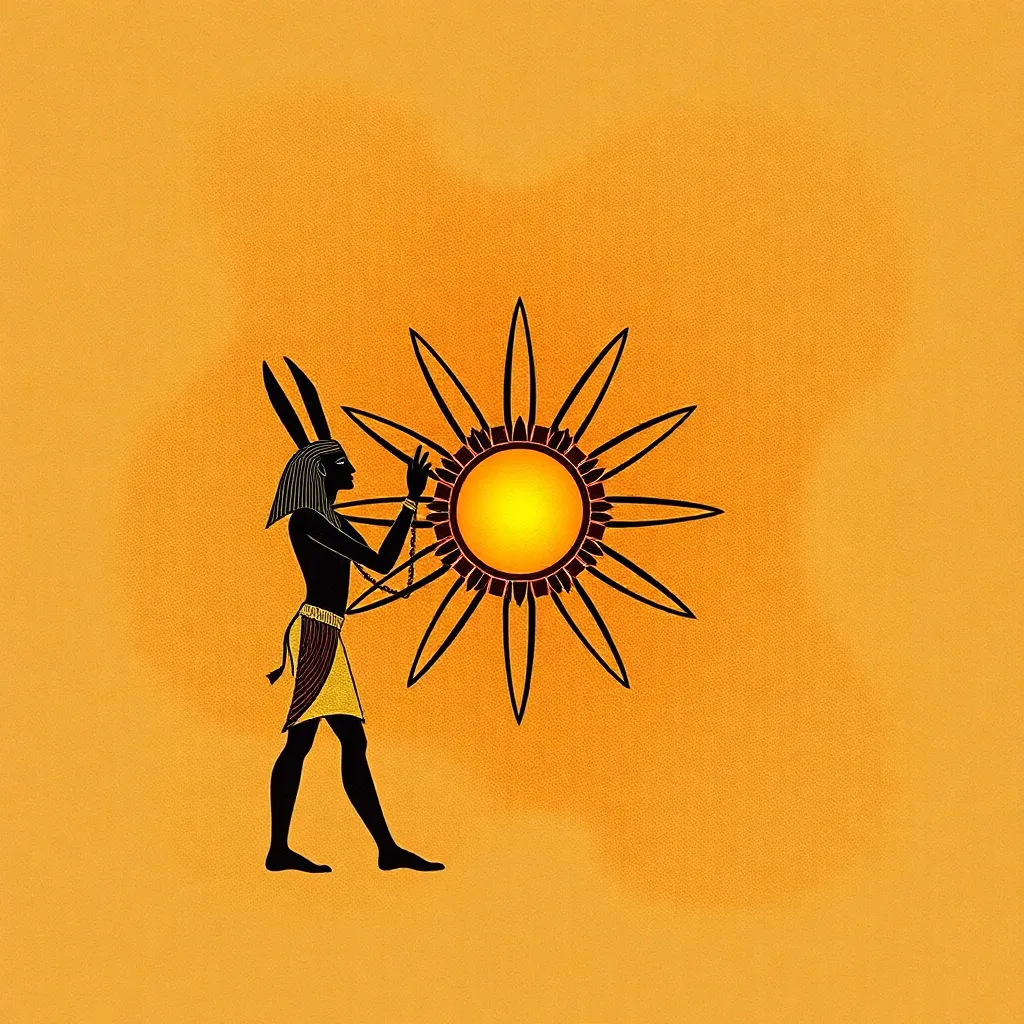The Sun God and the Seasons: Atenism’s Natural Calendar
I. Introduction
Atenism is a fascinating and relatively unique religious movement that emerged in ancient Egypt during the reign of Pharaoh Akhenaten. This monotheistic faith centered around the worship of the Sun God Aten, who was perceived as the sole deity and the source of life and nourishment. The importance of Aten in ancient Egyptian religion cannot be understated, as he represented a significant shift from the traditional polytheistic beliefs that dominated before Akhenaten’s time.
The purpose of this article is to explore how Atenism influenced the natural calendar and seasonal cycles of ancient Egypt, reshaping the relationship between the people and their environment.
II. Historical Context of Atenism
Atenism emerged in the 14th century BCE during a period of great change in ancient Egypt. Akhenaten, originally known as Amenhotep IV, ascended to the throne and initiated a radical transformation in the religious landscape of the time. He promoted the worship of Aten above all other gods, establishing a new capital at Akhetaten (modern-day Amarna) dedicated to this Sun deity.
Akhenaten’s reforms were met with resistance from the established priesthood and the general populace, who were accustomed to a rich tapestry of gods and goddesses. While traditional beliefs included deities such as Ra, Osiris, and Isis, Atenism simplified the divine hierarchy to focus solely on the sun, leading to a theological revolution in ancient Egyptian spirituality.
III. The Sun God Aten: Symbolism and Significance
The iconography of Aten is rich and varied, often depicted as a solar disk radiating light and life through elongated rays that end in hands, symbolizing the god’s benevolence. Unlike other Egyptian deities who were represented in human or animal forms, Aten was primarily represented as an abstract sun symbol.
The theological implications of sun worship in Atenism were profound. Aten was seen not only as a celestial body but as a life-giver and sustainer, a deity that provided warmth, light, and nourishment to all living beings. This understanding of Aten as the embodiment of the sun’s power led to a deeper reverence for nature and the cycles of life it governed.
IV. The Concept of Time in Atenism
Atenism redefined the perception of time by aligning it closely with the natural cycles of the sun. The ancient Egyptians traditionally used a lunar calendar, but Atenism emphasized a solar calendar that reflected the annual journey of the sun across the sky.
The natural calendar based on solar cycles allowed for a more accurate understanding of seasonal changes, which were crucial for agricultural planning. This integration of seasonal changes into religious practices meant that the worship of Aten was directly tied to the rhythms of nature.
V. Seasonal Festivals and Agricultural Practices
Seasonal festivals played a vital role in Atenism, celebrating the various stages of the agricultural calendar. Key festivals included:
- The Wepet Renpet (New Year Festival) – marking the annual flooding of the Nile.
- The Harvest Festival – celebrating the gathering of crops.
- The Festival of the Opening of the Mouth – a ritual for rejuvenation and sustenance.
The relationship between the Nile’s flooding and agricultural cycles was crucial for survival in ancient Egypt. The inundation of the Nile brought fertile silt to the land, allowing crops to flourish. Rituals and ceremonies were closely aligned with these seasonal changes, reinforcing the connection between Aten, the sun, the Nile, and the agricultural bounty.
VI. The Influence of Atenism on Egyptian Society
The natural calendar introduced by Atenism significantly altered daily life in ancient Egypt. People began to plan their activities, agricultural practices, and religious observances around the solar calendar, creating a more synchronized relationship with their environment.
The impact of Atenism extended beyond daily life, influencing art, architecture, and literature. The artistic representations from the Amarna Period often depicted scenes of Akhenaten and his family worshipping Aten, showcasing a distinct shift in artistic style that emphasized naturalism and intimacy.
However, after Akhenaten’s death, there was a gradual transition back to traditional beliefs, with the reinstatement of the old gods and the decline of Atenism. This shift reflected the people’s desire to return to the polytheistic practices that had defined their culture for centuries.
VII. Comparative Analysis with Other Ancient Calendar Systems
When comparing Atenism’s natural calendar with other ancient calendar systems, such as those of Mesopotamia and Mesoamerica, several similarities and differences emerge. For instance:
- Both Mesopotamian and Mesoamerican cultures developed calendars based on astronomical observations, similar to the solar calendar of Atenism.
- However, while Atenism focused solely on the sun, other cultures maintained a more complex pantheon of celestial bodies influencing their calendars.
Atenism’s influence can also be seen in subsequent cultures and religions, particularly in the way sun worship persisted in various forms throughout history. The legacy of Aten’s natural calendar continues to resonate, reminding us of the profound connection between humanity and the natural world.
VIII. Conclusion
In conclusion, Atenism holds significant importance in understanding the natural cycles that governed ancient Egyptian life. The worship of the Sun God Aten reshaped the perception of time and the agricultural calendar, integrating seasonal changes into religious practices.
This reflection on sun worship highlights broader implications for humanity’s relationship with nature, emphasizing the need for harmony with the environment. As we consider the relevance of Atenism’s natural calendar today, we are reminded of the enduring power of nature and the cycles that sustain life.




